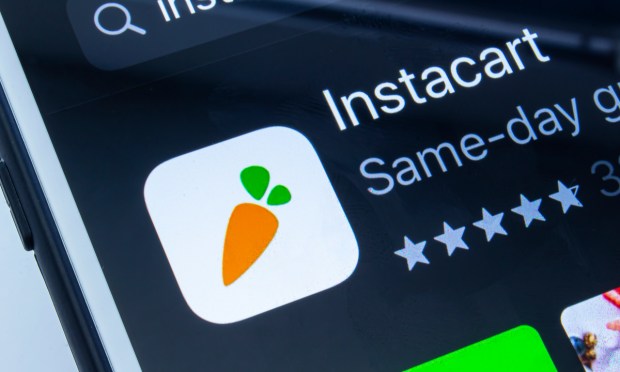Instacart Adds Made-to-Order Features in Effort to Capture More Grocery Occasions

In its ongoing push to capture more of consumers’ grocery (and overall food) spending, Instacart is expanding its capabilities, most recently adding digital customization features for made-to-order items.
The online grocery giant announced Tuesday (June 27) the launch of these personalization features via FoodStorm, the catering and order management software company that Instacart acquired back in the fall of 2021.
“Ordering custom-made items at the grocery store has been a longstanding challenge for both retailers and customers. The reliance on pen and paper, manual tracking of changes, and associated delays have presented difficulties for the industry over the years,” Rob Hill, general manager, Order Ahead at Instacart and former CEO of FoodStorm, wrote in a company blog post. “That’s why today, we’re excited to announce that FoodStorm … is introducing new capabilities that simplify the process of selling, managing, and fulfilling personalized made-to-order item.”
These features enable orders for customized items such as birthday cakes with personalized messaging, coffee orders with a range of variables, and more.
The news comes as Instacart looks to grow its share of the total grocery market and to boost digital penetration, given that the vast majority of grocery shoppers continuing to prefer brick-and-mortar options. Research from PYMNTS’ study “Tracking the Digital Payments Takeover: Catching the Coming eCommerce Wave,” created in collaboration with Amazon Web Services, which draws from an April survey of a census-balanced panel of nearly 2,700 U.S. consumers, reveals that 87% of grocery transactions are carried out in stores, and only 12% occur online.
That being said, consumers are certainly open to increasing their eGrocery engagement. The same study found that 1 in 3 consumers expects to increase their online grocery purchasing in the next year.
Indeed, the total online grocery market size is far smaller than it could be. Research from PYMNTS’ study, “Digital Economy Payments: The Ascent of Digital Wallets,” which drew from a survey earlier this year of more than 2,700 U.S. consumers about their shopping habits, noted that, in terms of dollars spent, non-grocery retail outpaces grocery by a factor of six. Specifically, consumers spent a total of $182 billion on online grocery purchases, while they spent a whopping $1.1 trillion on other retail products purchased digitally.
Additionally, the more sophisticated tech tools that Instacart can provide grocers with, the more it can maintain the loyalty of its merchants. After all, most smaller grocers cannot afford to build these kinds of platforms, and as such, if they want to offer a greater array of features, they may need to continue to rely on Instacart rather than shifting to their own direct channels.
“In online grocery today, the biggest shift is from independent retailers relying on others in a way that is not sustainable and not profitable to independent retailers, taking the reins and taking control and investing in this channel because of all the value that it can create,” Jeff Anders, co-founder and CEO of eGrocery technology company Grocerist, said in a February interview with PYMNTS.
By adding customization capabilities, Instacart provides one more feature that grocers may not be able to get elsewhere.

